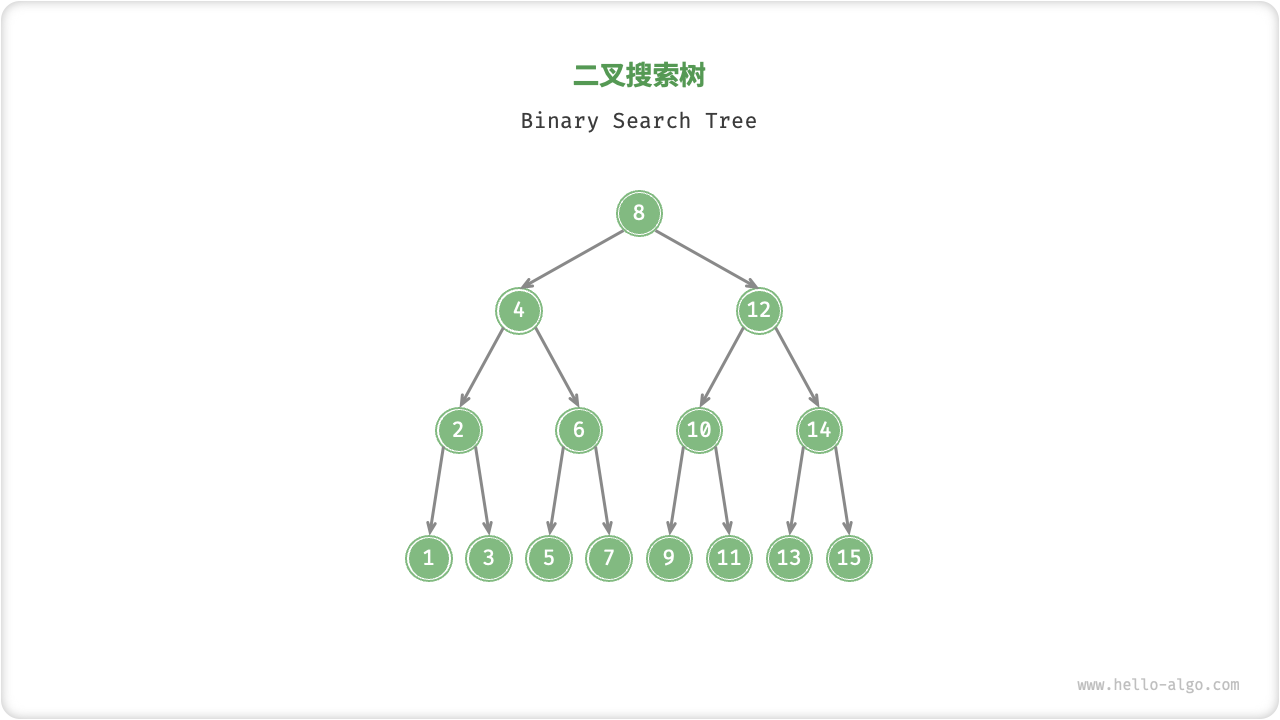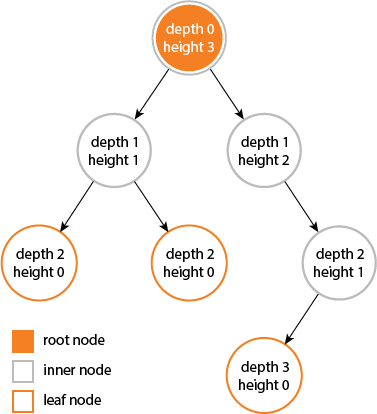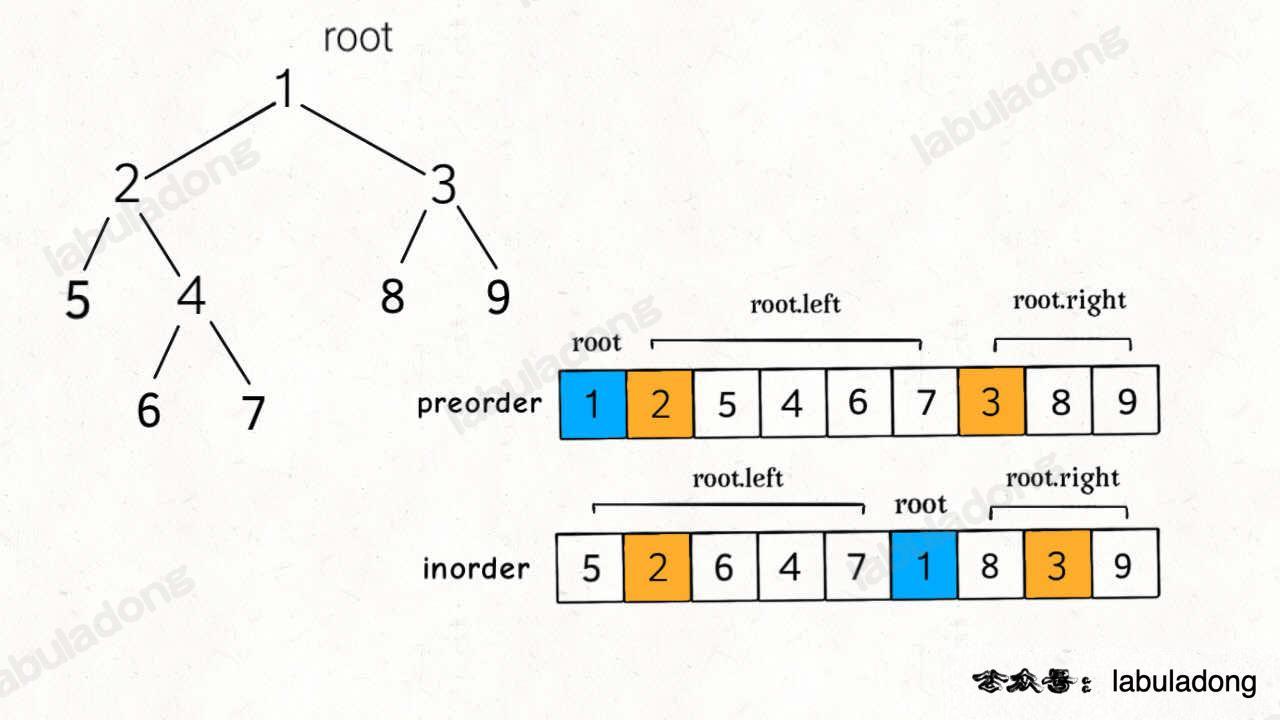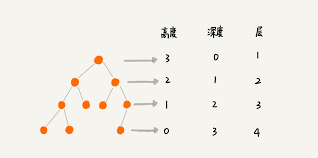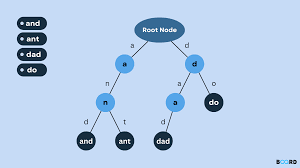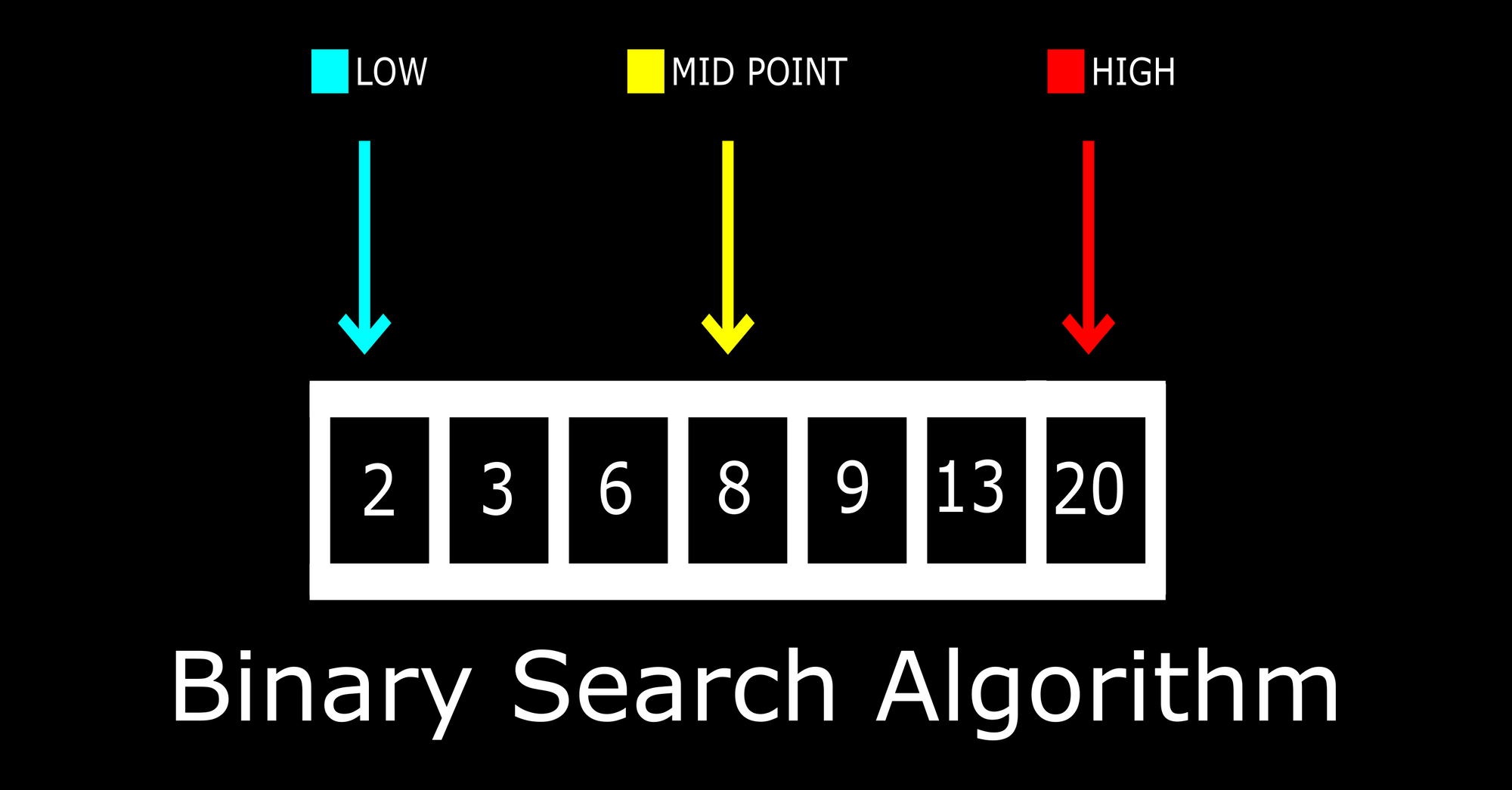二叉树之(最近)公共祖先
思路:
考虑问题一个简单的问题:如何寻找一个或多个元素:
Eg: 寻找值为 val1 或 val2 的节点
非常简单:
1
2
3
4
5
6
7
8
9
10
11
12
13
14
15
16
17
|
TreeNode find(TreeNode root, int val1, int val2) {
if (root == null) {
return null;
}
if (root.val == val1 || root.val == val2) {
return root;
}
TreeNode left = find(root.left, val1, val2);
TreeNode right = find(root.right, val1, val2);
return left != null ? left : right;
}
|
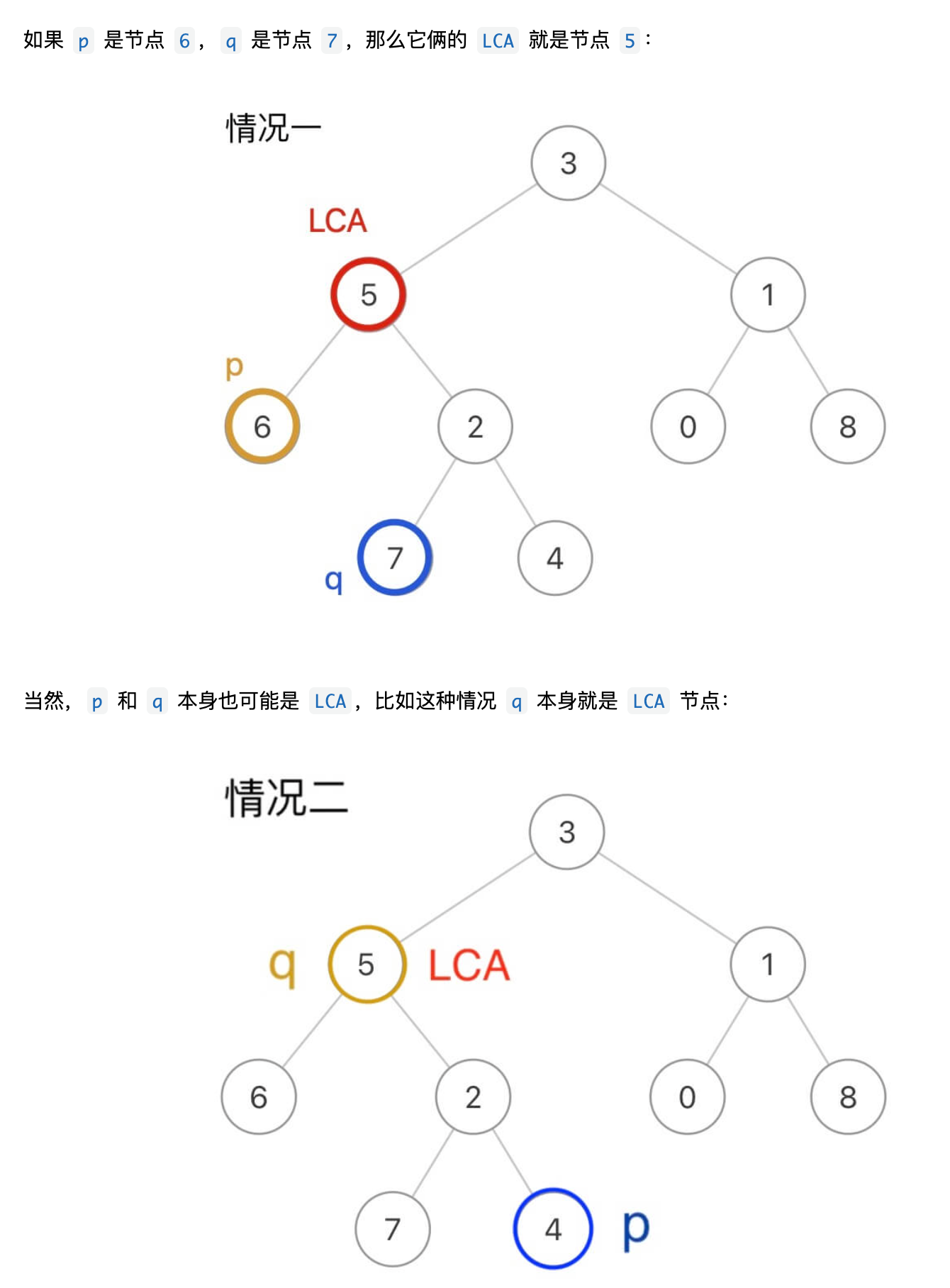
那么对于寻找LCA来说,其实就是找 在一个子树下面是否能够同时找到p和q,寻找最近的公共节点就是寻找最深的公共节点,因此要选择后序遍历
那么我们就会得出:
1
2
3
4
5
6
7
8
9
10
11
12
13
14
15
16
17
18
19
20
21
22
23
24
25
26
27
| public TreeNode lowestCommonAncestor(TreeNode root, TreeNode p, TreeNode q) {
return findTargeValues(root, p, q);
}
private TreeNode findTargeValues(TreeNode root, TreeNode p, TreeNode q) {
if (root == null) return null;
if (root.val == p.val || root.val == q.val) {
return root;
}
TreeNode leftValue = findTargeValues(root.left, p, q);
TreeNode rightValue = findTargeValues(root.right, p, q);
if (leftValue != null && rightValue != null) {
return root;
}
return leftValue == null ? rightValue : leftValue;
}
|
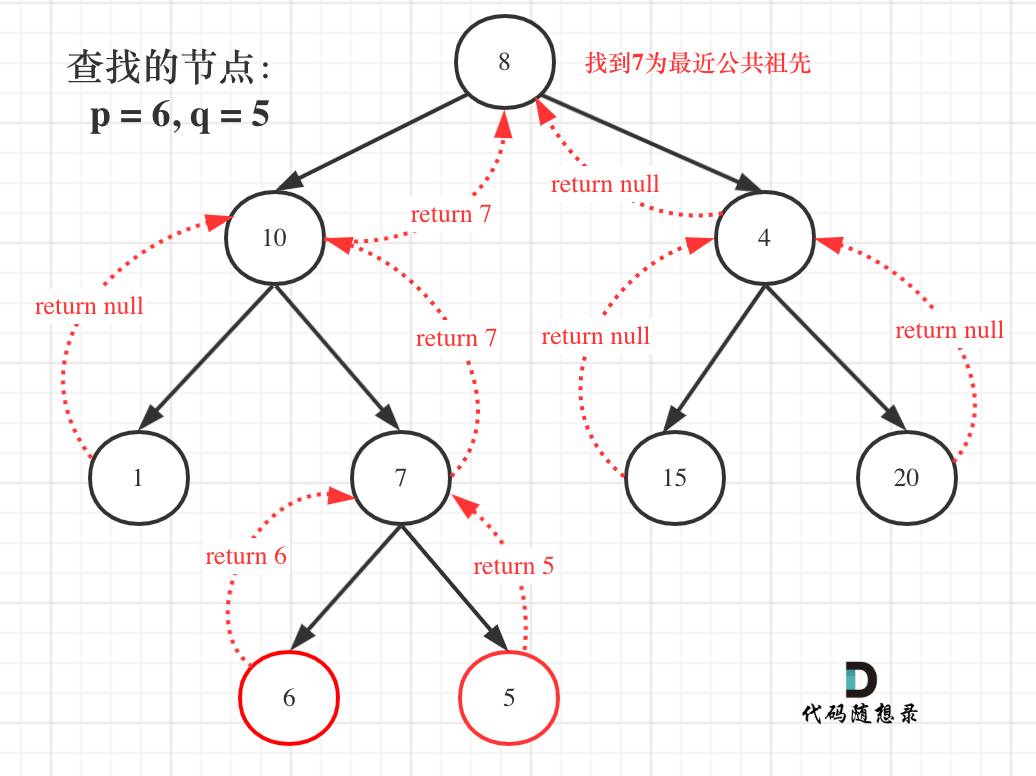
注意
leftValue == null ? rightValue : leftValue
就是
1
2
3
4
5
6
7
8
9
| if(left == null && right == null) {
return null;
}else if(left == null && right != null) {
return right;
}else if(left != null && right == null) {
return left;
}else {
return root;
}
|
本题 不再是p,q,而是一组node
只需要稍微修改一下:
1
2
3
4
5
6
7
8
9
10
11
12
13
14
15
16
17
18
19
20
21
22
23
24
25
26
27
28
| public TreeNode lowestCommonAncestor(TreeNode root, TreeNode[] nodes) {
Set<Integer> hs = new HashSet<>();
for (TreeNode node : nodes) {
hs.add(node.val);
}
return findTargetsFromNodes(root, hs);
}
private TreeNode findTargetsFromNodes(TreeNode root, Set<Integer> nodes) {
if (root == null) {
return null;
}
if (nodes.contains(root.val)) {
return root;
}
TreeNode leftValue = findTargetsFromNodes(root.left, nodes);
TreeNode rightValue = findTargetsFromNodes(root.right, nodes);
if (leftValue != null && rightValue != null) {
return root;
}
return leftValue != null ? leftValue : rightValue;
}
|
之前的题目都说target节点都在树里,但是本题 不保证树里一定有p 和 q
那么,对于上边两道题在前序遍历位置时发现当前root节点和target值相等直接返回就不能用了,因为不能保证是不是另一个也存在,我们需要知道树的所有信息才行,也就是要在后序遍历的位置,即:
1
2
3
4
5
6
7
8
9
10
11
12
13
14
15
16
17
18
19
20
21
22
23
24
25
26
27
28
29
30
| boolean isPExist = false, isQExist = false;
public TreeNode lowestCommonAncestor(TreeNode root, TreeNode p, TreeNode q) {
TreeNode ret = findTargetValues(root, p, q);
if (!isQExist || !isPExist) return null;
return ret;
}
private TreeNode findTargetValues(TreeNode root, TreeNode p, TreeNode q) {
if (root == null) return null;
TreeNode leftValue = findTargetValues(root.left, p, q);
TreeNode rightValue = findTargetValues(root.right, p, q);
if (leftValue != null && rightValue != null) {
return root;
}
if (root.val == p.val) {
isPExist = true;
return root;
}
if (root.val == q.val) {
isQExist = true;
return root;
}
return leftValue == null ? rightValue : leftValue;
}
|
本题最重要的是利用BST的性质
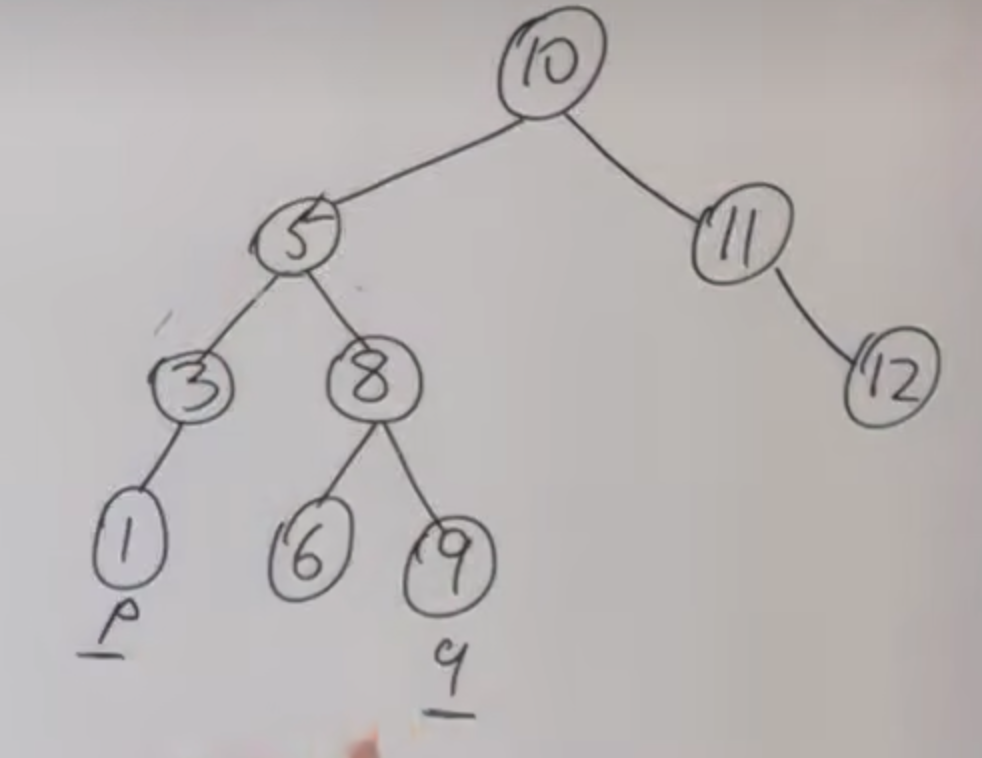
- 当根节点值小于p和q 即 小于 p,q的最小值
- 说明要的公共祖先在右边的树里
- 当根节点值大于p和q 即 大于 p,q的最大值
- 说明要的公共祖先在左边的树里
- 当根节点介于中间时则一定为最近的公共祖先
- 为什么最近?
- 因为如果还要进行下去,要么往左走要么往右走总会丢失一个
- 按图中的例子,如果5下面还有更近的祖先,那么假设5往左走,那么会丢失q,同理,向右走则会丢失p
结论: Math.min(q.val, p.val) <= root.val <= Math.max(q.val, p.val)那么此时的root即为最近的公共祖先
pseudocode:
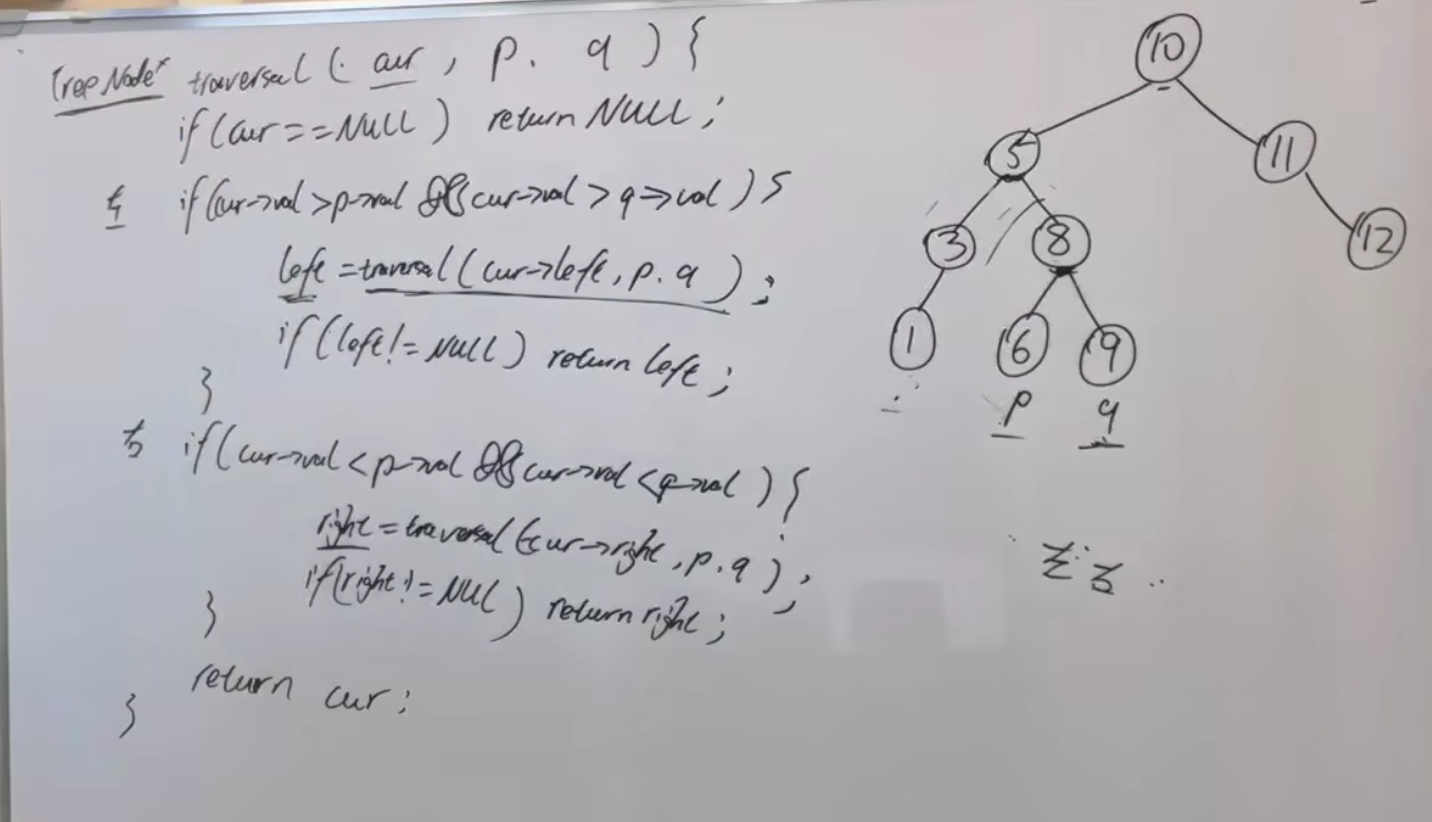
1
2
3
4
5
6
7
8
9
10
11
12
13
14
15
16
17
18
19
20
| public TreeNode lowestCommonAncestor(TreeNode root, TreeNode p, TreeNode q) {
int val1 = Math.min(p.val, q.val);
int val2 = Math.max(p.val, q.val);
return findTarget(root, val1, val2);
}
private TreeNode findTarget(TreeNode root, int val1, int val2) {
if (root == null) return null;
if (root.val < val1) {
return findTarget(root.right, val1, val2);
}
if (root.val > val2) {
return findTarget(root.left, val1, val2);
}
return root;
}
|
本题包含了对父节点的引用:
1
2
3
4
5
6
| class Node {
public int val;
public Node left;
public Node right;
public Node parent;
}
|
这道题用的是链表合并的思路:
即让两个指针p1 指向A的指针,p2指向B的指针,能够同时到达相交节点 c1
用两个指针 p1 和 p2 分别在两条链表上前进,我们可以让 p1 遍历完链表 A 之后开始遍历链表 B,让 p2 遍历完链表 B 之后开始遍历链表 A,这样相当于「逻辑上」两条链表接在了一起。
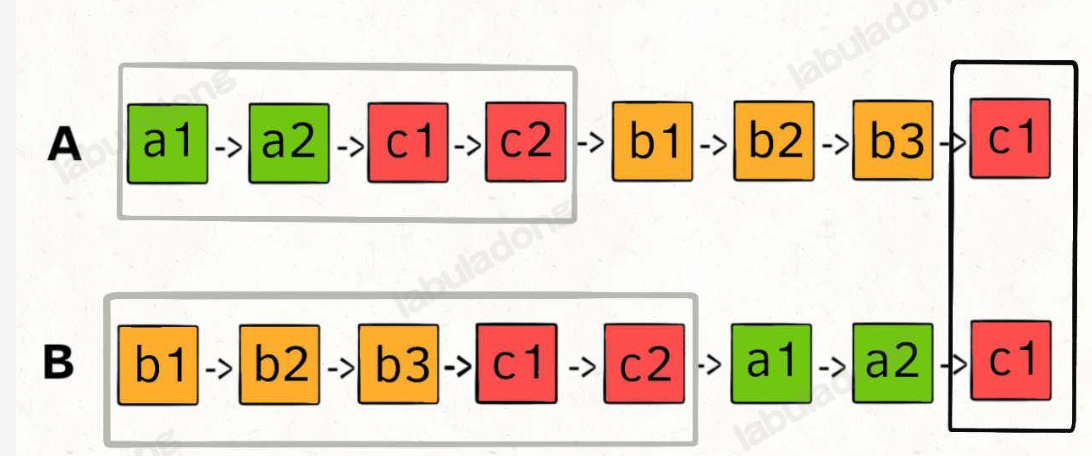
稍微替换一下,借用parent:
1
2
3
4
5
6
7
8
9
10
| public Node lowestCommonAncestor(Node p, Node q) {
Node pPointer = p, qPointer = q;
while (pPointer != qPointer) {
if (pPointer == null) pPointer = q;
else pPointer = pPointer.parent;
if (qPointer == null) qPointer = p;
else qPointer = qPointer.parent;
}
return pPointer;
}
|





